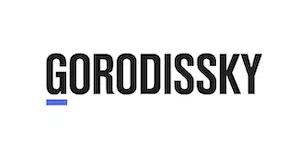- within Privacy topic(s)
- with readers working within the Business & Consumer Services industries
Starting from June 01, 2021, the Eurasian Patent Office accepts applications for Eurasian Industrial Designs (EAID).
The Eurasian design protection system is a direct development of the Eurasian Patent Convention (EAPC) signed on September 09, 1994, in Russia and entered into force on August 12, 1995. Now the functionality of this regional IP protection system headed by the Eurasian Patent Organization (EAPO) is enlarged and it provides the possibility to obtain a Eurasian patent for industrial design.
The Member States of EAPC signed on September 09, 2019, a Protocol on Protection of Industrial Designs (Protocol), which entered into force on March 17, 2021.
On April 12, 2021, the Administrative Counsel of the EAPO approved the Part II of the Patent Instruction to the EAPC containing the material and procedural provisions regulating the Eurasian design protection system as well as the Regulation on fees of the EAPO relating to Eurasian designs.
According to the Article 22 (4) of the Protocol a Eurasian patent for an industrial design is valid in the territory of a Member State if the corresponding Eurasian application for an industrial design was filed after the entry into force of this Protocol in respect of that State.
Actually, the Protocol is valid for five countries: Russia, Armenia, Azerbaijan, Kyrgyzstan and Kazakhstan. The other countries signatories to EAPC (Belarus, Tajikistan, Turkmenistan) are supposed to implement respective national procedures for joining the Protocol.
Accordingly, currently the following options are available for the applicants to get their designs protected in the countries of the Eurasian region.
Firstly, the design protection can be obtained by filing a national design application in the concrete country of interest.
Secondly, it is possible to proceed with filing an application through Hague system of international registration of industrial designs seeking protection simultaneously in a number of designated member states, including those of the Eurasian region, using a single application form.
Thirdly, now it is possible to file a Eurasian application for industrial design using the regional Eurasian Design protection system with extending to countries of the Eurasian region, which are members of EAPC.
In this sense obtaining a Eurasian Design Patent can be a solution in order to obtain protection in countries of interest in Eurasia and which did not join the Hague system of international registration of industrial designs yet. Moreover, the procedure of obtaining a Eurasian Design Patent is expected to be more cost-effective in comparison with the Hague system in case of claiming protection in similar countries.
Non-patentable solutions
According to the Protocol a Eurasian industrial design (EAID) is a solution of an outer appearance of an industrial or handicraft article, which should be patentable according to set criteria, in particular, packaging, label, composite article, set of articles, typeface, as well as an independent part of an article.
According to the Patent Instruction the Eurasian patent is issued for an industrial design that is new and original in its essential features.
This means that a patentable solution must be new and not known from the publicly available information in the world (including Eurasian and national applications with earlier priority and which are not withdrawn) and it must be original what means that the essential features of the article must have a creative character, in particular if there is no prior known solution of the outer appearance of the article with similar purpose which makes the same overall impression on the informed user.
According to the Rule 78(5) of the Patent Instruction there is a grace period of 12 months for filing an application for an EAID without affecting the patentability in case the information related to this design has been disclosed by the author, applicant or other person who received this information from them.
It is important to note that the novelty and originality of the claimed solution will be checked by the Examiner at the stage of substantive examination only in case an opposition is filed by a third party (based on non-compliance with said patentability criteria) and only in frames of information and materials submitted with the opposition.
There is still a list of solutions that cannot be protected as EAIDs due to direct prohibition by the provisions of the Patent Instruction.
The following requirements are to be checked by the ex-officio examination, namely, the Examiner will check if the proposed solution:
- Is contrary to public interests or principles of humanity and morality (this ground for refusal can be applied by the Examiner already on the stage of formal examination).
- Includes, reproduces, or imitates official state symbols or signs, or names and symbols of international organizations (or their recognizable parts) without the respective consent of competent state bodies or international organizations; or official control, warranty or hallmarks, seals, awards and other insignia (in case the consent is obtained the mentioned elements can be included in the ID as non-protectable elements).
- Is determined exclusively by technical function of an article.
The following requirements will be checked by the Examiner on the stage of substantive examination only in case of submission of oppositions by third parties against the claimed solution, namely, the proposed solution should be deemed non-patentable in case:
- It includes or imitates official names or pictures of cultural heritage sites or their recognizable parts without the respective consent of competent bodies of a Member State or the respective right holder (in case the consent is obtained the mentioned elements can be included in the design as nonprotectable elements).
- It is identical or confusingly similar with prior trademarks (filed and published or already protected on the territory of a Member State) or includes such trademarks.
- It is identical or confusingly similar with copyrighted objects earlier known on the territory of a Member State or includes such objects without the consent of the copyright holder.
- It is capable to mislead the consumers in respect of the article or its manufacturer, or place of origin.
Filing requirements
An application for an EAID is filed with the Eurasian Patent Office on paper or electronically. An important rule is that the applicant not domiciled in Member States should be represented by Eurasian Patent Attorneys duly registered before the Eurasian Patent Office. An application form should be completed and filed in Russian. If some required documents (like Convention priority document) are filed in a foreign language it is required to submit a translation into Russian.
The application must indicate the applicant, the author(s) of the ID, the title of the ID, the indication of the article, or the product connected with the claimed solution, the class of the International classification of industrial designs (ICID) as well as the priority claim, if any. Submission of a description of the claimed industrial design is optional, it can be filed by the applicant in order to clarify the essence of the industrial design.
The application should also include pictures of the claimed design with different views, but no more than seven views for each claimed design.
The application can include up to 100 industrial designs provided that they all relate to one and the same class of the ICID. The representation of the claimed ID can be made in photographs or by pictures or drawings including computer drawings. It is allowed to use dashed lines in order to show the parts or elements which are disclaimed from claiming protection by the applicant. By that, the parts or elements of the articles that are claimed for protection should be made with solid lines.
Procedures before the Eurasian Patent Office
The Eurasian Patent Office conducts a preliminary (formal) examination and checks the filed solution as to its compliance with formal requirements and also it verifies if the claimed solution does not contradict the principles of humanity and morality at least in one Member State.
In case of positive result of preliminary examination, the application is published for opposition purposes within a month from the date of forwarding to the applicant the notification about positive result of formal examination. It is important to note that no deferment of publication is provided.
Within two months from the publication date third parties (and also a national Patent Office if it is provided by the legislation of the respective Member State) can file an objection / opposition against the EAID application on the basis that the claimed design is not new or original or represents a solution which cannot be registered as industrial design according to the Protocol/Instruction.
In case the objection/opposition is filed by a person insisting that the claimed solution cannot be registered as industrial design, since it is identical or confusingly similar with a prior copyrighted object known on the territory of at least one Member State or is included in the claimed design, in this case the dispute can be resolved by the way of mediation procedure in case both the applicant and the person who filed an objection/opposition submit a respective request with the Eurasian Patent Office.
The Eurasian Patent Office conducts a substantive examination (with due account of objections/oppositions, if filed) which may result in issuance of a decision of grant or decision of refusal. The decision of refusal can be objected with the Eurasian Patent Office within three months from the date of forwarding the decision by the Eurasian Patent Office.
Furthermore in case and as a result of consideration of the objection the Eurasian Patent Office still issues a decision of refusal it can be further appealed with the President of the Eurasian Patent Office within four months from the date of its forwarding to the applicant.
In case of refusal to grant an EAID Patent there is a possibility to transform the application for an EAID into national applications in the Member States (per choice of the applicant).
In case of positive decision the EAID is registered in the Register of EAIDs and it is published in the official bulletin within two months subject to payment of the respective fees and the Letters Patent is issued. The Eurasian Patent is valid on the territory of all Member States.
The term of validity of an EAID is five years counting from the date of filing an application and it can be extended each time for five years, but the overall term of validity cannot be more than 25 years.
The Protocol and Patent Instruction also provide for a legal possibility to challenge the Eurasian Design Patent. The invalidation of Eurasian Design Patent is possible by the way of administrative procedure before the Eurasian Patent Office or as a result of proceedings in the national Courts or other competent bodies of Member States.
The invalidation of the EAID patent as a result of administrative procedure before the Eurasian Patent Office concerns all Member States. In case the decision of invalidation is issued as a result of proceedings in the national Courts or other competent bodies of Member States it will be valid only for the territory of the Member State where such decision was issued.
Accordingly, in such a case the EAID will be valid only on the territory of Member States where the decision of invalidation was not rendered.
Disposal of EAID exclusive rights
The Eurasian Patent Convention provides that the EAID owner shall be entitled to assign the exclusive right to the EAID to another person or license the EAID. Besides, the exclusive right to EAID may be transferred as a result of legal succession.
The assignment of the exclusive right to the EAID or legal succession of rights (by inheritance or through some other form of legal succession) shall be permitted for the territories of all the Member States within which the patent is valid only. At that, the assignment of the exclusive right for the EAID to another person shall be possible for all industrial designs specified in the EAID patent as well as with respect to some of them.
It should be noted that the transfer of the exclusive right to an industrial design shall not be allowed if it can be the reason for consumer's confusion, in particular with regard to the manufacturer of the product or place of manufacture of the product.
The exclusive right to the EAID may also be a subject of a security of interest (pledge) agreement. The pledge of the exclusive right to the EAID arises from the date of the conclusion of the security of interest agreement or from another date specified in the agreement. The agreement must contain a subject of the agreement, the results of the assessment of the exclusive right to pledged industrial design, substance, value and duration of fulfillment of the obligation secured by the pledge. Unless otherwise provided by the agreement the EAID patent owner shall have the right to dispose of the exclusive right to the EAID in order to fulfill the pledge obligation.
Both assignment and security of interest agreements must be registered before the Eurasian Patent Office and the transfer of the exclusive right to the EAID shall be valid for third parties only after its registration with the Eurasian Patent Office.
The EAID patent owner shall have the right to license the EAID in any Member State on the territory of which the EAID patent is valid. At that, the license agreement must by registered by the national patent office of that Member State in respect of territory of which the relevant agreement has been concluded.
The national patent office immediately after the registration of the license agreement notifies the Eurasian Patent Office of such registration.
The Eurasian Patent Office shall publish information about assignments, licenses and security of interest agreements in the official bulletin of the Eurasian Patent Office.
Enforcement of EAID exclusive rights
According to the Patent Instruction to the EAPC the EAID patent owner shall have the right to use the EAID, and to permit or prohibit its use by other persons. Acts performed with respect to an industrial design and recognized as its use shall be defined in accordance with the laws of the Member States.
The exclusive right to a Eurasian industrial design is valid in the territory of all Member States and shall be enforceable as the industrial designs registered under the national procedure in the order provided by the national law of the Member State on territory of which the infringement takes place. Actions that can be recognized as the illegal use of the industrial design shall also be determined in accordance with the national legislation of the respective Member State.
The Rule 84 of the Patent Instruction to the EAPC provides a temporary legal protection for the EAID in the territory of all Member States.
The scope of temporary legal protection is determined by the all of the essential features of the industrial design, which are reflected in the images of the product published by the Eurasian Patent Office. From the date of publication of the EAID patent, the patent owner has the right to claim reasonable compensation from the persons who used the claimed industrial design during the period between the date of the EAID application publication and the date of the EAID patent publication, in accordance with the national legislation of the Member State in which territory the industrial design was used.
The provisional legal protection shall not be deemed to have occurred if a patent application was rejected, the possibilities for appeal of which have been exhausted, or if the Eurasian application is considered withdrawn. The scope of legal protection afforded by a Eurasian patent for an industrial design is determined by the essential features of the industrial design that are reflected in the images of the product.
Originally published by The Trademark Lawyer by CTC Legal Media, issue 5
The content of this article is intended to provide a general guide to the subject matter. Specialist advice should be sought about your specific circumstances.
[View Source]


